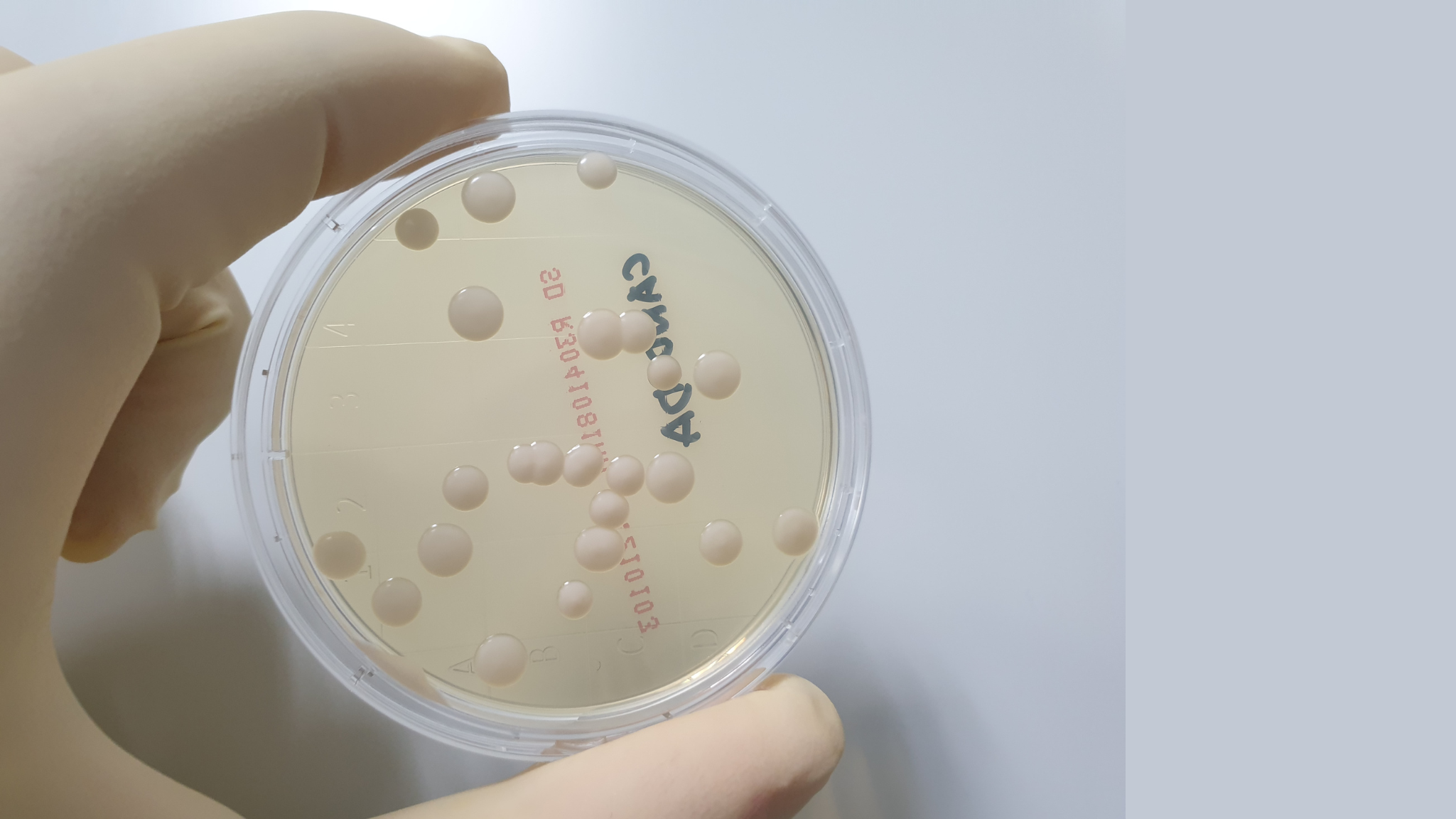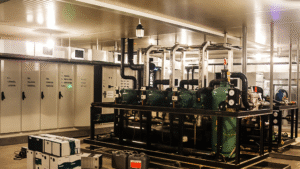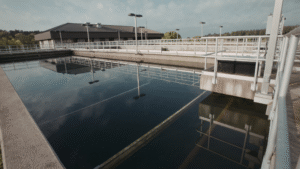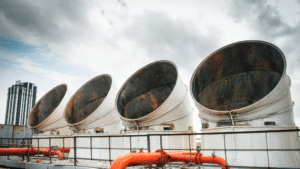Nowadays, microbial contamination is more than a compliance problem. The growth of improper microbial flora can derail an entire wastewater treatment system, raise operating costs, and put human health and environmental safety at risk. Whether you’re working in food production, pharmaceuticals, chemical manufacturing, or municipal treatment plants, microbial testing plays a central role in managing a reliable and efficient waste water purification system.
At ETI, we understand that managing wastewater is not just about removing solids or neutralizing chemicals. It’s also about understanding the biological interactions that occur throughout the treatment process. Microorganisms can support purification in biological treatment stages, but when left unchecked, they can also clog filters, damage membranes, and compromise your filter systems .
This guide breaks down how microbial testing fits into treating wastewater, where it’s most critical, what methods are used, and how it supports long-term water quality and system performance.
Why Microbial Testing Matters in Industrial Wastewater Systems
Microbial activity is at the core of many wastewater treatment systems, particularly in facilities that rely on biological treatment. In processes like activated sludge systems, biofilters, and membrane bioreactors, microorganisms are responsible for breaking down organic matter, reducing chemical oxygen demand (COD), and aiding in the overall purification process.
However, microbial growth can quickly become a liability. Imbalanced microbial populations can disrupt nutrient removal, raise COD levels, and lead to the formation of biofilms that clog filtration equipment. For facilities that reuse water or discharge into sensitive environments, microbial testing ensures that harmful pathogens are detected and controlled before they reach the final stages of treatment while also focusing on removing particles from the water .
Without proper monitoring, your treatment plant may struggle to meet water quality targets, especially when dealing with high concentrations of organic material or when treating wastewater from manufacturing processes with variable loads.
Key Microbial Indicators in Wastewater
Microbial testing focuses on identifying and measuring key biological indicators that reflect the health and safety of a wastewater treatment plant. These indicators help determine whether biological treatment is working as intended and whether further action is needed.
The most common microbial indicators include:
- Total coliforms and E. coli: These bacteria are indicators of fecal contamination and are used to assess the sanitary quality of treated water.
- Heterotrophic plate count (HPC): This measures the number of general waterborne bacteria that can influence the biological balance of a system.
- Fungi and protozoa: These may appear in systems that receive surface water or impure feed water sources.
- Biochemical oxygen demand (BOD) and COD: While not microbes themselves, these parameters reflect the amount of biodegradable organic matter and the oxygen needed for microbial decomposition.
Facilities that use advanced treatment systems such as membrane bioreactors, reverse osmosis, or activated carbon filtration often rely on microbial testing to prevent fouling, optimize performance, and reduce the risk of harmful organisms making it into the final filtered water.
Impact of Microbial Imbalance on System Performance
When microbial populations in a wastewater treatment plant become imbalanced, the consequences can be severe. Uncontrolled microbial growth can clog membrane filtration systems, reduce flow in cartridge filters, and lead to biofilm formation in membrane-based systems.
This can result in:
- Increased chemical usage to remove microbial buildup
- Higher operating costs due to system inefficiencies
- Damage to filter systems and shortened equipment life
- Reduced water quality in treated water or water reuse applications
- Risk of releasing untreated pathogens into the environment
In many cases, microbial imbalance stems from inconsistent treatment conditions, variable waste loads, or insufficient monitoring. By keeping microbial counts within optimal ranges, facilities can prevent these issues before they become expensive problems.
Where Microbial Testing Fits in the Treatment Process
Microbial testing should not be limited to the final effluent. It plays a role at each stage of the wastewater treatment process, providing key insights and helping operators make informed adjustments.
1. Pre-treatment
At this stage, the focus is on removing large particles, sand, and grit that could interfere with downstream systems. Microbial testing here identifies early-stage contamination in impure feed water sources and helps assess how incoming water quality might affect biological treatment stages.
2. Primary Treatment
This phase involves physical processes like sedimentation and sand particle filtration. Although microbial activity is not the main focus, testing for suspended solids and total waste gives operators a sense of the organic load entering the system.
3. Secondary Treatment
This is where microbial activity is most intense. Biological processes dominate, breaking down dissolved solids and organic compounds. Monitoring microbial counts helps ensure healthy bacterial populations are maintained and that systems like activated sludge and biofilters are functioning efficiently, facilitating optimal water flow .
4. Tertiary Treatment
Final-stage treatments like membrane filtration, carbon filtration, and disinfection target any remaining microbes. Testing verifies that bacteria, viruses, and other pathogens have been adequately removed or neutralized, protecting downstream users and aquatic life.
Testing Methods Used in Industrial Wastewater
Microbial testing in wastewater treatment systems can range from basic culturing techniques to advanced molecular diagnostics. The choice depends on the treatment needs, system type, and level of precision required.
Common Methods Include:
1. Culture-Based Testing
The traditional lab method: processes involved include placing samples on agar plates to grow visible colonies.
- Pros: Inexpensive, useful for identifying general microbial presence
- Cons: Time-consuming (24–72 hours), doesn’t detect non-culturable or dormant microbes
- Best for: Routine baseline checks in primary treatment and biofilm detection
2. ATP (Adenosine Triphosphate) Testing
Measures the presence of cellular energy in living organisms.
- Pros: Fast results (minutes), good for total biomass
- Cons: Doesn’t specify microbe types, can be skewed by chemical interference
- Best for: On-the-spot microbial activity trends, validation of biocide effectiveness
3. qPCR (Quantitative Polymerase Chain Reaction)
Molecular testing that quantifies specific microbial DNA.
- Pros: Highly specific and sensitive, even for low-abundance microbes
- Cons: Higher cost, requires lab equipment
- Best for: High-risk systems (RO, pharmaceutical), troubleshooting persistent biofouling
4. Dip Slides and Field Test Kits
Simple test kits that visually show microbial growth.
- Pros: Affordable, quick for trend monitoring
- Cons: Qualitative, not quantitative
- Best for: On-site, day-to-day monitoring in industrial wastewater or cooling towers
Each method provides insights into different aspects of microbial health and contamination. For example, PCR might identify a specific pathogen, while ATP testing gives a snapshot of total biological activity in a system. These insights allow operators to adjust filter media, tweak the chemical dosing, or schedule maintenance to keep wastewater filtration process running efficiently.
Where and When to Conduct Microbial Testing
Microbial issues can arise in any area with stagnant water, organic matter buildup, or variable flows. Here’s where to test:
- Pretreatment Inlets – Check incoming industrial wastewater or process water for baseline contamination
- Cooling Towers & Boilers – Open systems are microbe magnets; test recirculating water weekly or monthly
- Membrane Filtration Units (RO, UF, MBR) – Test feed and reject streams regularly to prevent biofouling
- DAF Units, Clarifiers, and Biological Reactors – Sample to evaluate biomass health or the effectiveness of bioaugmentation
When to test:
- Startup/commissioning of new water treatment systems
- After biocide shock treatments
- Seasonal changes (algae blooms, rain events)
- Whenever there’s a jump in suspended solids or COD
Frequent testing enables timely interventions—before microbes compromise your entire treatment plant.
ETI’s Expertise: Microbial Testing with a Purpose, Chemistry for a Solution
At ETI, microbial testing is not a standalone offering. It’s the backbone of every wastewater treatment strategy and chemical sale we facilitate with our water treatment partners. Microbial presence affects more than just compliance reporting. It drives up chemical demand, undermines filtration performance, and destabilizes treatment systems if left unchecked.
That’s why we treat microbial testing as a strategic input to our chemical formulation and selection process. Our wastewater treatment chemistries are built around the real, site-specific microbial dynamics of your system, not generic assumptions.
We combine field expertise, lab diagnostics, and advanced blending capabilities to ensure your wastewater purification system runs efficiently from start to finish. Whether you need to support biological treatment or suppress unwanted microbial activity, our chemical programs are rooted in data, not guesswork.
Our microbial testing and treatment support includes:
- Full-system water quality analysis to identify microbial hotspots and treatment gaps
- On-site and lab-based microbial diagnostics, including bacteria, fungi, and biofilm monitoring
- Targeted chemical formulation based on test results, including:
- Ongoing monitoring and adjustments to detect shifts in biological loading before they impact performance
- Seamless integration with ETI’s full suite of wastewater treatment solutions
Chemical tools designed for microbial balance:
- Bioaugmentation: Boost the activity of beneficial microbes where it matters most.
- Alkalinity boosters: Maintain stable pH for effective biological treatment.
- Grease trap maintenance products: Control anaerobic microbial growth and foul odors.
- Advanced coagulants and flocculants: Remove suspended solids and reduce microbial load early in the process.
Don’t Let Microbes Slip Through the Cracks
Let testing inform your chemistry. Let chemistry drive your results. Connect with ETIto develop a smarter, data-driven microbial testing and wastewater treatment plan tailored to your system.
Frequently Asked Questions (FAQs)
1. What is microbial testing in wastewater treatment?
Microbial testing identifies the presence and levels of bacteria, viruses, and other microorganisms in a wastewater treatment system. It helps ensure that biological treatment is functioning correctly and that pathogens are not present in treated water.
2. When should microbial testing be performed?
Microbial testing should be conducted regularly at key stages of the treatment process, including pre-treatment, secondary biological treatment, and post-filtration. It is especially important when water is reused or discharged to sensitive environments.
3. What happens if microbial levels are too high?
High microbial counts can lead to fouling in filtration systems, reduced treatment performance, and potential health risks. It may also indicate that disinfection or biological treatment is not working as intended.
4. Which industries benefit most from microbial testing?
Industries with variable organic loads, such as food and beverage, pharmaceuticals, and chemical processing, benefit significantly from various wastewater applications . Any facility using membrane filtration technologies or water reuse should monitor microbial activity.
5. Can microbial testing lower operating costs?
Yes. Early detection of microbial problems can prevent equipment damage, reduce chemical usage, and improve overall system performance, all of which contribute to lower operating costs.





